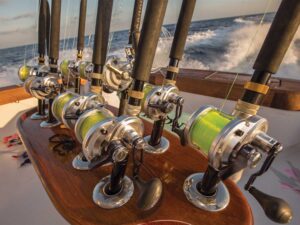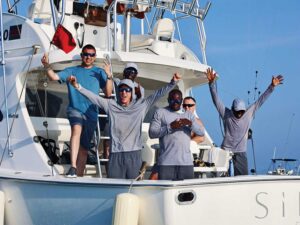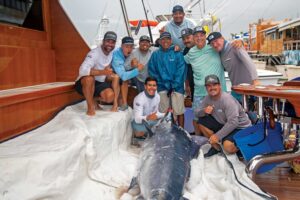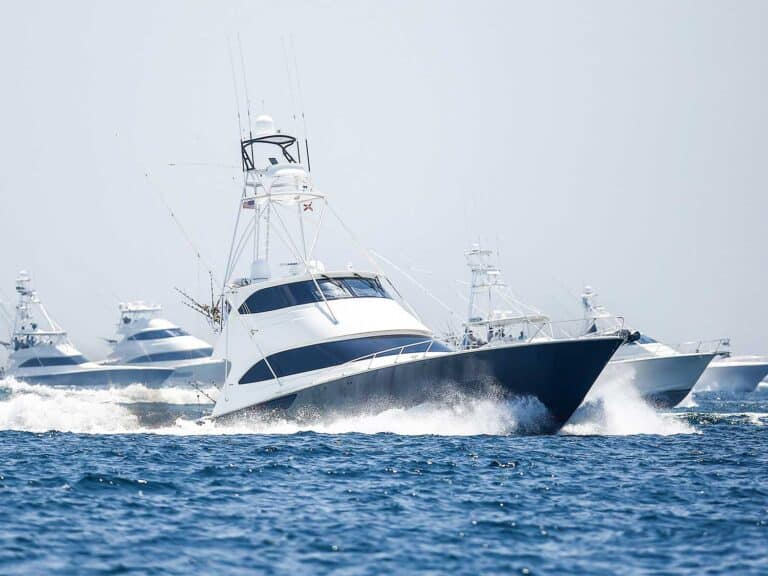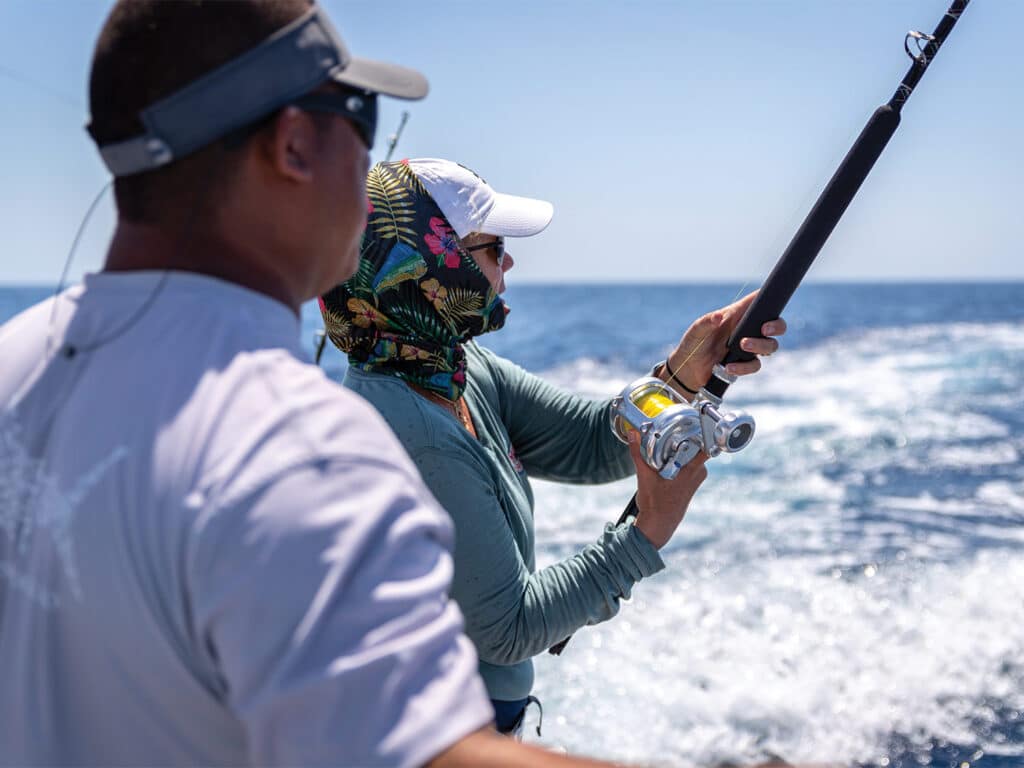
Special delivery: Sign up for the free Marlin email newsletter. Subscribe to Marlin magazine and get a year of highly collectible, keepsake editions – plus access to the digital edition and archives.
As a professional captain, I’m invariably responsive to anyone who reaches out to me via social media, and I get asked a lot of questions about tackle, especially by people just getting into sport fishing. While we all are keen to save money wherever we can, there are some instances where those savings early on will benefit you, but there are also circumstances that can equate to disaster, costing you more in the long run.
Owners spend hundreds of thousands or possibly even millions of dollars on a sportboat, but then when it comes time to buy tackle, they will sometimes end up going with less-expensive options versus the tried-and-true name-brand gear that has proved to last a lifetime. I’m not saying that some corners can’t be cut when it comes to your tools of the trade—the tools that take a beating day after day, year after year—or even that less-expensive tackle does not have its place, but I am saying from my experience, more often than not, the best-quality gear is worth the investment.
After putting as much time and effort as most of us do into pursuing offshore gamefish, many anglers drop the ball at the most critical step. If there’s one lesson I’ve learned time and time again, it’s that you never want to skimp on good tackle—or good rigging—because a big tuna or crazy billfish will find the weak link every time. If you haven’t already, you should replace anything in your gear bag that isn’t up to snuff to increase your chance of success.
Quality Rods and Reels
Of all of the places to save money, this is the worst area to cheap out. I recommend sticking with the big-name brands because they are tested and proven. I have broken rods on big fish quite a few times, and regardless of how this happened (ahem), it was the reel that still managed to get the job done. If you have great reels, they will withstand the abuse, and you can trust that they will work properly when you need them to. And you’ll also spend less time getting them serviced, which equates to more time fishing.
While it’s rare, I’ve had a reel break on me in the past, but it was always the rod that gave out and buckled first. With so many rod options out there, this can be tricky to navigate. The best way to get the proper rods for your type of fishing is to ask the professionals in your area to see what they recommend and what they—or their customers—use for the species you plan to target. A well-built rod tends to always be fairly expensive, especially those designed for big game, but in the end, these rods will hold up for years and generally withstand anything you can throw at them.
Stay in Line
Respool your line regularly using reputable line manufacturers’ products. I hear too often from many amateurs that they broke off their fish, and while some just ended up having too much drag on the bite or inexperience in adjusting the drag during the fight, most of the time, the culprit is bad line. Whether it’s just old and faded or cloudy, has been rubbing against a compromised guide or rod tip, or has been wet or exposed to the sun for too long, the result of broken-off fish is disregard for the line’s integrity. When in doubt, change it out. Either way, you should be cutting back at least 30 feet of your main line after every fishing day.
Investing upfront in spooling half of your trolling reels with braided line helps you two-fold: One, it gives you far more line capacity, so the odds of getting spooled decrease dramatically; two, you now have to fill only half of a spool with monofilament, which makes your respooling days far faster and easier. In time, the upfront costs of using braided backing will balance out, or even save you money.
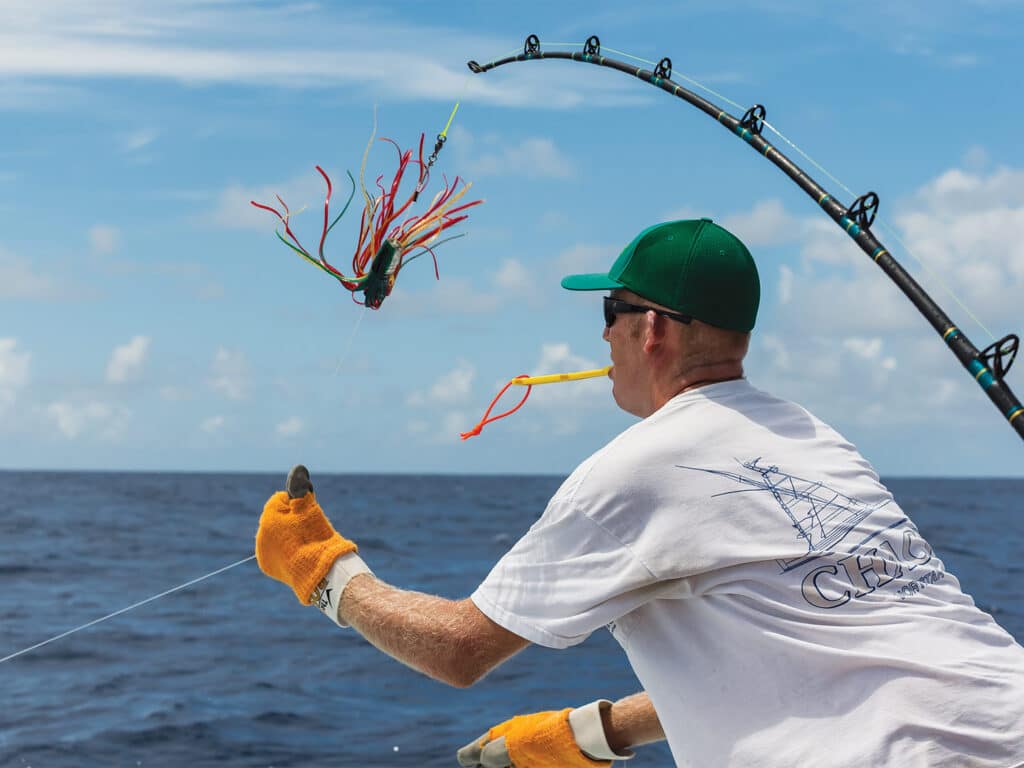
When at all possible, use high-quality fluorocarbon leader material, especially when fishing for tuna and other line-shy species. My crew replaces existing mono leaders with fluorocarbon on everything we buy, including our spreader bars and daisy chains, because it has high abrasion resistance and lasts much longer than its monofilament counterpart.
Inferior swivels are almost undetectable to the untrained eye. The size of the swivel has little to do with its overall strength, but what it’s made of and how it was constructed are the main considerations. Don’t go cheap on barrel or snap swivels; use only quality, name-brand swivels.
Ball-bearing snap swivels spin far more freely and keep line twists at bay. If your main line should get twisted during a fight, it will decrease the breaking strength of your line, and on the right fish, this could mean a snapped line. This can also relate to why we hear of many people breaking off fish due to line failure; it could have been because the angler was working with an inferior snap swivel that did not keep the line twists out and weakened the line so much that it broke.
And lastly, if you don’t have the time—or the know-how—to rig your tackle effectively, hire a professional to do it for you. There aren’t many store-bought, pre-rigged tackle offerings that can be trusted, but some specialty items have become much better than in years past (RJ Boyle’s pre-rigged swordfish baits or the Fisherman’s Center’s pre-made wind-ons or deep-drop rigs come to mind), but there is no substitute for having a local professional rig for you if you want to be competitive, because we all know that just because one method works well in one area, it doesn’t mean it works well everywhere.
If you are new to offshore fishing, hire a pro to take you out on your first few fishing trips to get you squared away with the basics. Learning the ropes from the get-go can reduce the learning curve, and save you a lot of frustration and headaches.
So, get your tackle sorted, hire a good local guide, grab a friend (because fishing alone is not nearly as fun), and jump on the boat. And if you need any tips, I’m here for you—on Instagram, @captainrickywheeler. I’m looking forward to seeing more release flags hanging from your (starboard) rigger and lots of meat in your fish box.
